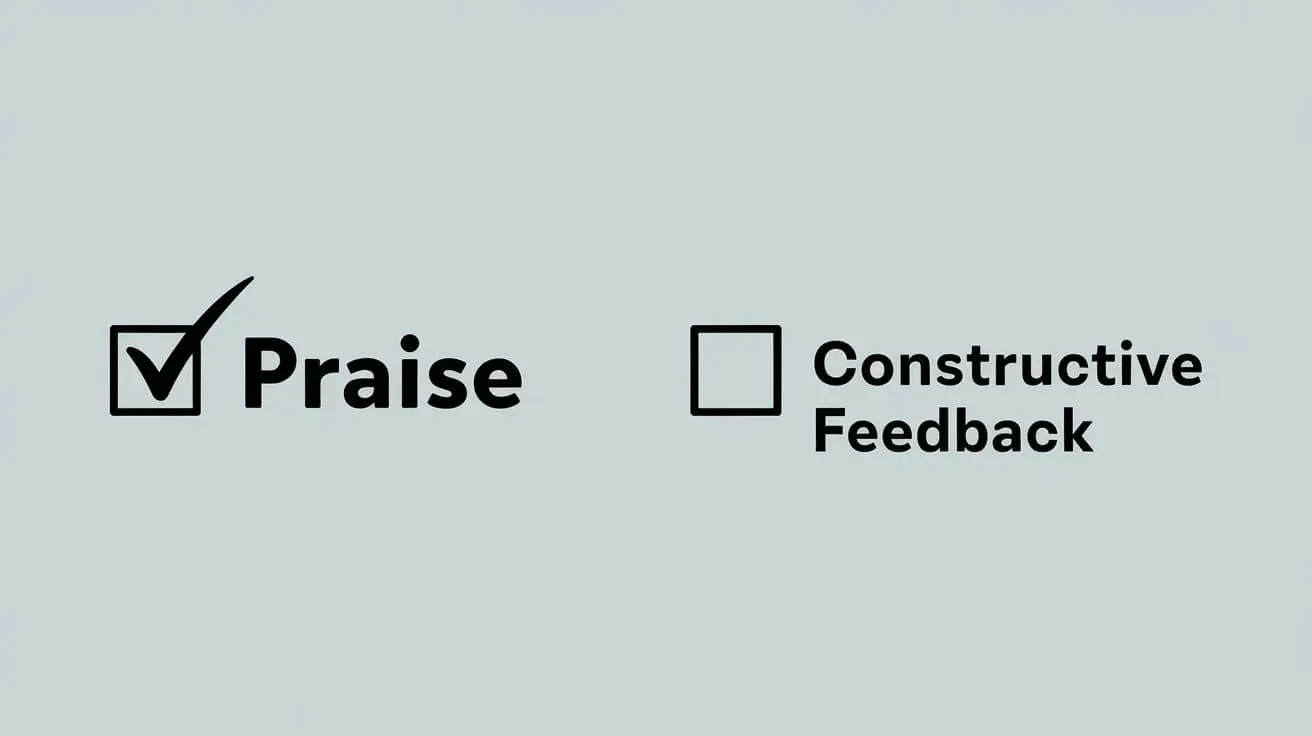Balancing Praise and Constructive Criticism in LORs
By - Admin | August 24, 2024

When writing a Letter of Recommendation (LOR), it's essential to strike a balance between offering praise for the applicant's strengths and providing constructive criticism where appropriate. This balance not only enhances the credibility of the letter but also gives a well-rounded perspective on the applicant’s abilities and areas for growth. In this blog, we’ll explore how academic and professional recommenders can effectively balance these elements to create a meaningful and honest recommendation.
Academic Recommenders: Observing Classroom Engagement and Research Projects
For academic recommenders - professors, research supervisors, or academic advisors—writing an LOR provides the opportunity to reflect on both the student’s intellectual capabilities and their overall engagement in academic activities. While it's tempting to offer glowing praise, admissions committees appreciate a nuanced portrayal of the student, including constructive criticism that shows growth potential.
Balancing Praise:
Academic achievements are often highlighted in LORs, but the manner in which this praise is delivered is key. A balanced letter will provide specific examples of academic success while also reflecting the student’s journeyof improvement.
Example of Balanced Praise:
- Unbalanced Praise: "Priya is one of the brightest students I’ve ever taught. She consistently excels and shows deep understanding of all subject matter."
- Balanced Praise: "Priya has demonstrated exceptional skill in her physics courses, particularly in quantum mechanics, where she not only earned the highest grade in the class but also challenged herself to take on additional independent research. Her ability to master complex material quickly is impressive, though she sometimes hesitates to ask for help when needed."
In the balanced example, the recommender acknowledges Priya's strengths but also highlights an area of potential improvement—her reluctance to seek help. This adds credibility and depth to the recommendation.
Including Constructive Criticism:
Constructive feedback should never overshadow praise, but it does show that the recommender has carefully evaluated the student. Admissions committees often view students with room for growth more favorably than those who are presented as flawless.
Example of Constructive Criticism:
- "While Raj consistently delivered strong research work in my lab, he sometimes struggled with time management during long-term projects. After an initial delay in meeting deadlines, heshowed great improvement by adopting more effective planning strategies in the final stages of the project."
Here, the feedback is constructive, acknowledging a challenge while illustrating how the student adapted and improved. This kind of insight makes the recommendation more believable and shows that the student is capable of personal growth.
Professional Recommenders: Observing Internships and Full-Time Roles
For professional recommenders—internship supervisors, managers, or team leaders—the challenge is similar. Balancing praise with constructive feedback provides a holistic view of the candidate’s work ethic, skill set, and potential to thrive in a professional environment.
Balancing Praise:
In a professional setting, praise typically centers around performance outcomes, teamwork, and leadership. However, offering blanket praise without specificity can make a recommendation seem generic. Instead, professional recommenders should include examples that illustrate the candidate's real impact.
Example of Balanced Praise:
- Unbalanced Praise: "Arjun was an outstanding intern and exceeded all expectations during his time at our firm."
- Balanced Praise: "Arjun quickly adapted to the fast-paced environment of our consulting firm, contributing valuable insights in client meetings and helping streamline our market analysis process. His ability to synthesize large amounts of data into actionable insights was a key strength, though his communication skills in presenting these findings could be more concise."
This example highlights Arjun's success while providing constructive feedback on his presentation skills. The inclusion of a specific area for improvement makes the recommendation more trustworthy.
Including Constructive Criticism:
For professional roles, constructive criticism should be focused on areas where the candidate can grow within a workplace setting. Rather than framing weaknesses as negatives, suggest them as opportunities for growth, showing how the candidate responded to challenges.
Example of Constructive Criticism:
- "Vanessaexcelled in her project management role, consistently delivering projects on time and within budget. However, early in her tenure, she struggled with delegating tasks. As she gained more experience, she improved significantly in this area, learning to trust her team and allowing them more autonomy in completing assignments."
This feedback is constructive without being overly critical, showing that Emily faced a challenge but learned and adapted over time. It also provides valuable insight into her leadership development.
Start creating your personalized Letter of Recommendation now
Create Your LOR TodayConclusion
Whether writing for an academic or professional context, balancing praise with constructive criticism is vital for crafting a compelling and ethical LOR. A letter that offers both strengths and areas for growth presents a more complete and honest picture of the candidate, allowing admissions committees or hiring managers to make better-informed decisions. By including specific examples and feedback, recommenders can write letters that not only support the applicant but also stand out for their credibility and insight.


















 Mobile number is verified
Mobile number is verified


Leave a Comment
Your email address will not be published. Required fields are marked